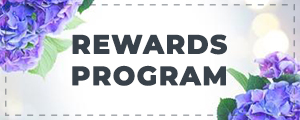| Heuchera 'Marmalade' |
USDA Zone: 4-9 |
Marmalade Coral Bells features dainty spikes of indian red bell-shaped flowers rising above the foliage from late spring to early summer. Its attractive crinkled lobed leaves emerge pink in spring, turning coppery-bronze in colour with curious hot pink undersides and tinges of harvest gold the rest of the year.
Dramatic foliage ranges from deep golden hues to glowing reddish pink with undulating margins. Golden mature foliage features hot pink undersides. Sweet sprays of tiny white flowers emerge on vivid red stems. An outstanding seasonal accent for border or woodland garden.
Marmalade Coral Bells is recommended for the following landscape applications;
- Mass Planting
- Rock/Alpine Gardens
- Border Edging
- General Garden Use
- Groundcover
- Container Planting
Bloom Time: Summer
Deer Resistant
Rabbit Resistant
Attracts Bees, Butterflies, and Hummingbirds
Common Name: Alumroot, Coralbells
|
Key Feature
|
Light Needs | Landscape Uses |
 |
 |
|
|
|
|
| More About Marmalade Coral Bells |
| Height: 10 inches |
Spread: 16 inches |
Flower Colour: Red Shades |
|
Coral bells are easy to grow and blend easily with most other perennials in the landscape. Because of their low, mounding habit, they are often used as edging along paths or in containers. Marmalade Coral Bells performs well in both full sun and full shade. It prefers to grow in average to moist conditions, and shouldn't be allowed to dry out. It is not particular as to soil type or pH. It is somewhat tolerant of urban pollution. Consider covering it with a thick layer of mulch in winter to protect it in exposed locations. Marmalade Coral Bells is a fine choice for the garden, but it is also a good selection for planting in outdoor pots and containers. It is often used as a 'filler' in the 'spiller-thriller-filler' container combination, providing a mass of flowers and foliage against which the larger thriller plants stand out. Note that when grown in a container, it may not perform exactly as indicated on the tag - this is to be expected. Also note that when growing plants in outdoor containers and baskets, they may require more frequent waterings than they would in the yard or garden. Be aware that in our climate, most plants cannot be expected to survive the winter if left in containers outdoors, and this plant is no exception. NOTE: Some flowers and plants may be harmful or poisonous to people or pets if touched or ingested. If you require more information before placing an order, please let us know in advance. |











